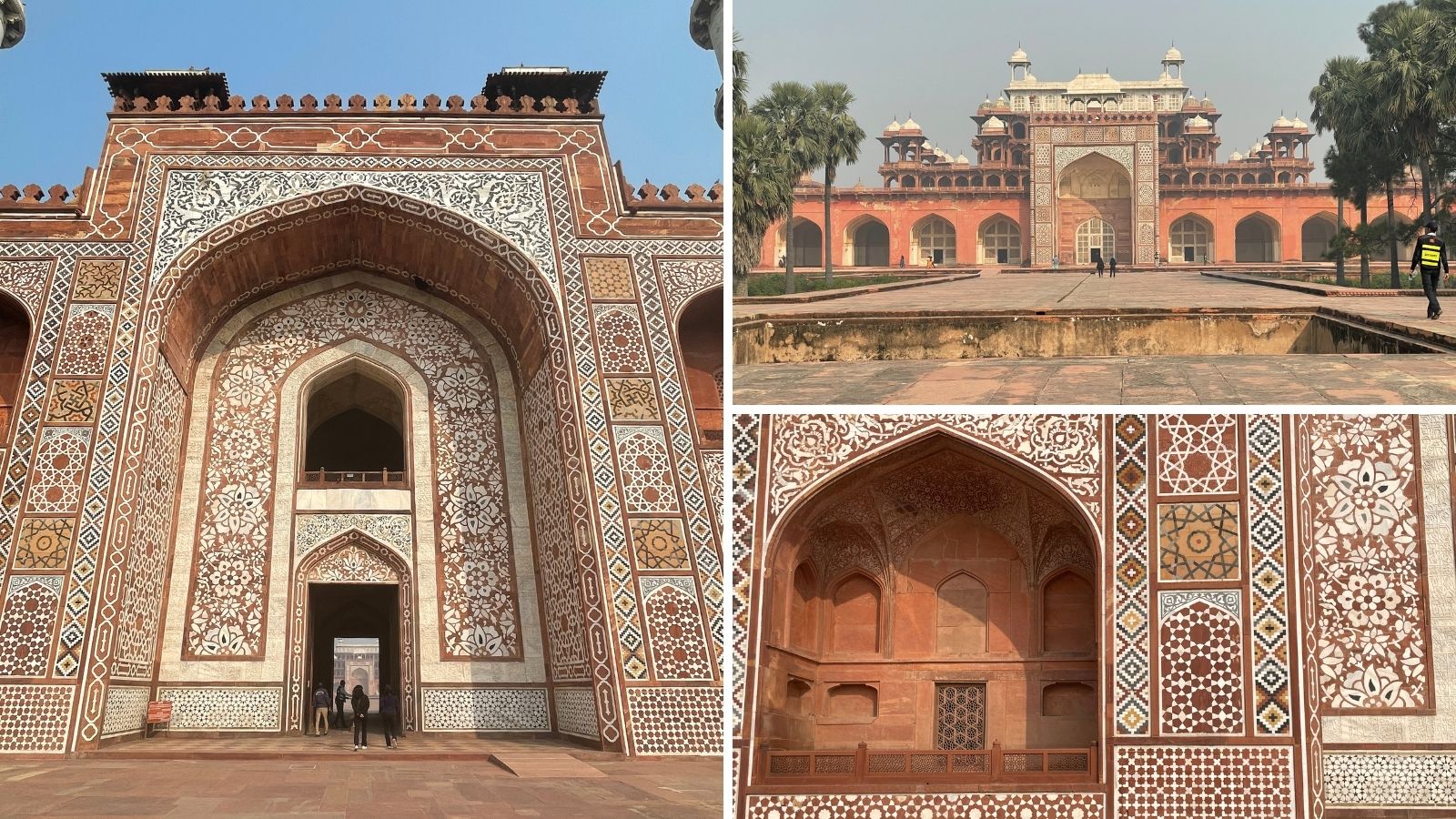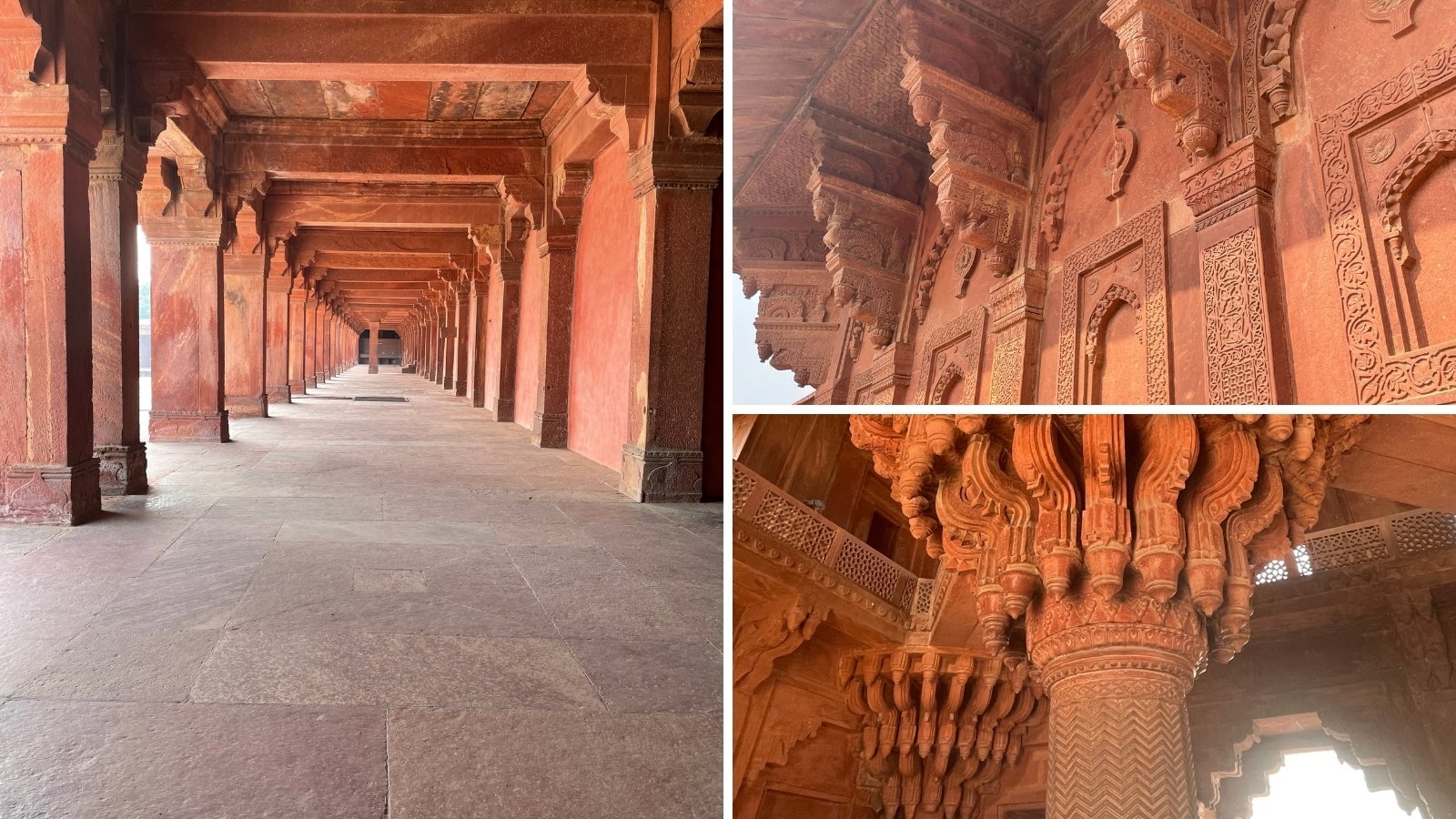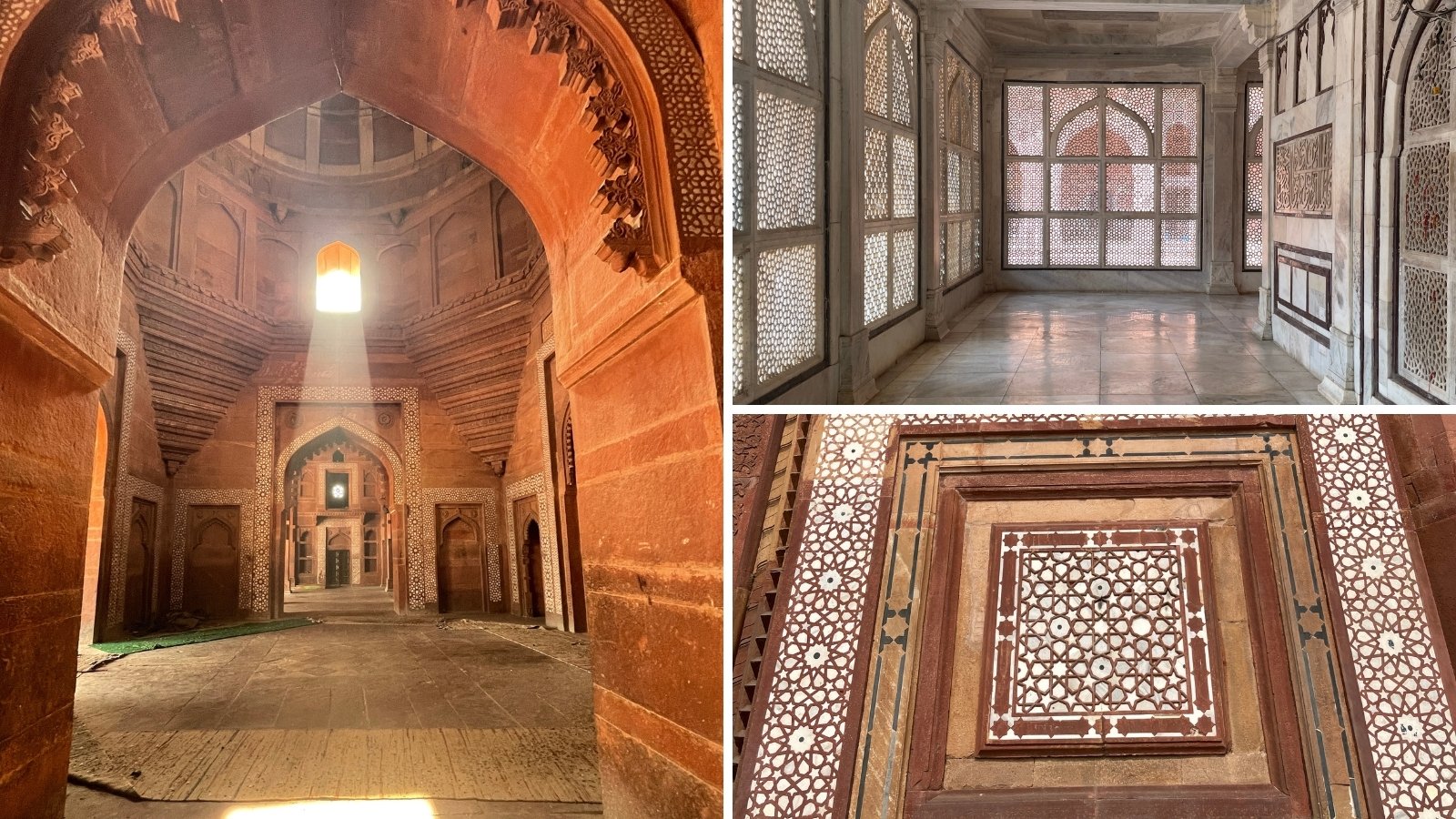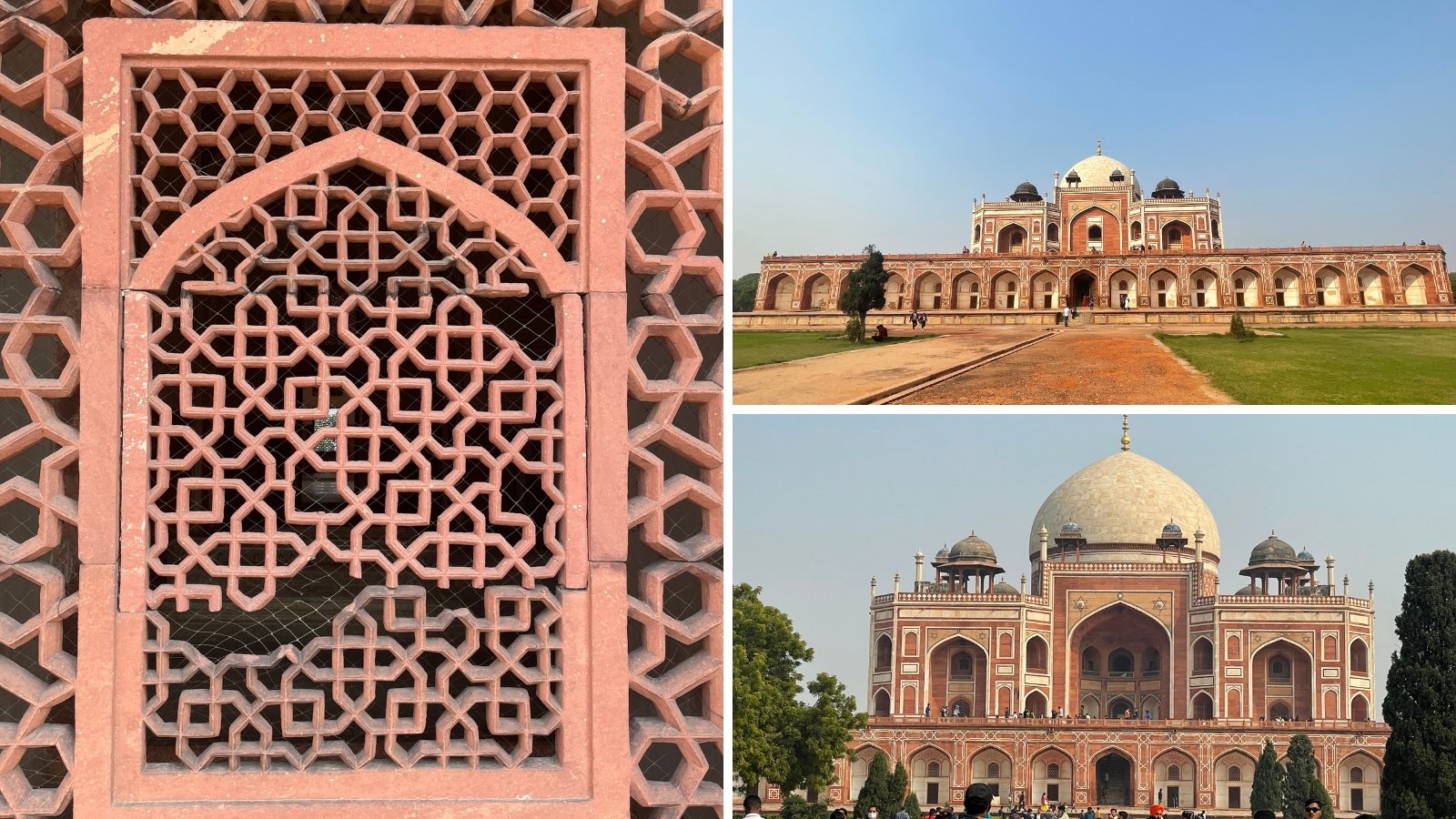About
Sikandra – The Portal to Eternity
The Geometry of Empire is a five-part journey through the world of Mughal architecture from Delhi to Agra and Fatehpur Sikri. Each course explores a different building type within this remarkable era mausoleums, forts, palaces, and dargahs (shrines) revealing how geometry shaped every aspect of their design.
Students will learn how the Mughals used geometry not only as a decorative tool but also as a way of expressing order, harmony, and proportion. Through analytical drawings and historical study, the series connects art, mathematics, and built heritage.
By the end of the series, students will have developed a deep understanding of how geometry formed the foundation of Mughal design, how it was translated into stone and craft, and how it continues to influence the visual language of India today.
This four-week course explores the tomb of Emperor Akbar at Sikandra, a serene complex on the outskirts of Agra where architecture, geometry, and nature come together in perfect balance. Built in red sandstone and inlaid with marble, the complex is surrounded by sprawling gardens where peacocks and deer still wander, a place designed for reflection on life, death, and the infinite.
Through the study of the grand portal and surrounding façade, students will observe how geometry transforms from royal and religious contexts into the quiet majesty of the mausoleum. The course highlights how Mughal designers used geometry not only as ornament but as a metaphor for the eternal, etching the emperor’s memory into the language of pattern.
Students will analyse the unique geometric systems seen on the portal which include 4-, 5-, and 6-fold symmetries. We will also study the proportions of the archway as an architectural frame. Through drawing and analysis, students will explore how geometry shapes meaning, emotion, and remembrance in the final resting place of one of India’s greatest rulers.
Images courtesy of Jyotika Purwar
Key Information
Who is this course for?
All levels of ability and experience are welcome. You must be aged 18 or over to participate in our programmes.
How many people can attend?
40 places are available
What dates/times do I attend?
This workshop will run on Thursdays 4, 11, 18, 25 June 2026, 10:00 – 13:00 British Summer Time
What materials do I need?
- 1 x standard compass
- 1 x smaller compass, ie. 4.5 inches If you don’t already own both, Rotring makes this useful set.
- a pad of tracing paper, A3
- a pad of drawing/cartridge paper, A3
- Pencils, 1 x HB, 1 x 2B
- sharpener, eraser
- selection of colour pencils
- coloured fineliner pens (3mm or 5mm)
- a ruler, at least 30 cm (good to have a gridded ruler, see example)
Online Learning
How do I attend the online class?
This class will take place on Zoom, an online meeting platform. A link for joining the Zoom meeting will be sent before the start date.
Handouts and recordings of sessions will be made available via Thinkific, our online learning platform, for a period of 3 months after the end of the workshop.
What if I have questions during the workshop?
Students will be able to ask questions via chat or unmuting themselves. Students will also have access to our online learning platform, Thinkific, where we share supplementary content.
I live in a different time zone, can I still attend?
We encourage you to attend the course in real time to really benefit from instruction; however, if you are unable to attend live due to the difference in time you can catch up via recordings on our online learning platform, Thinkific. These recordings are available for a limited time after the course.
Recordings cannot be purchased separately if the course is fully booked or if the course has already started.
Tips:
You must download the Zoom app and create a free account before the class begins, so that you can use the full range of features:
- You can create your free account here
- You can download the Zoom app onto your computer or device here
- You can create your free account here
FAQs
Do you offer concessions?
Yes, we offer concessions for Seniors/60+, full-time students and people who are unemployed/in receipt of benefits.
Concessions cannot be applied in retrospect. To receive a concession, please apply via our online form. We will then send you a discount code to use when booking your space.
What if I need to change or cancel my booking?
No refunds, unless cancelled by the School. If you cancel up to 1 week before the workshop starts, we can offer a transfer to another workshop of equivalent value, subject to availability.
Tutor Biography
Jyotika Purwar is an interior architect based in Mumbai, India. She holds a Bachelor’s degree in Interior Architecture from CEPT University, Ahmedabad, and an MFA from the School of the Art Institute of Chicago. For the past eight years, she has led her own design practice, working on a wide range of residential and commercial projects.
Her passion for architectural history has taken her across the globe—to Spain, Morocco, Egypt, Turkey, Japan, and beyond—where she has documented and studied buildings of historical and cultural significance. These travels have deepened her fascination with geometry as a universal language of design.
Over the last six years, Jyotika has been engaged in an in-depth exploration of geometric designs in architecture, studying how material, craft, and mathematical precision come together to create meaning and beauty. This journey has gradually led her back to her own heritage in Mughal architecture.
Agra, her hometown, remains a constant source of inspiration. Here, she finds resonance between global influences—particularly from Persia and the Ottoman world—and the distinctive Indian expressions that evolved under the Mughals. Her current work focuses on comprehensively studying, analysing, and tracing these influences, from the planning of monumental sites to the ornamentation and vast pattern systems that define their surfaces.
This series is a reflection of that passion: an invitation to discover the Geometry of Empire, where art, mathematics, and faith come together to shape some of the world’s most magnificent architecture.



